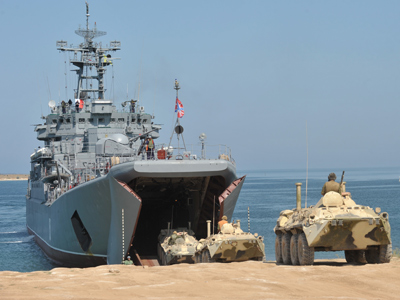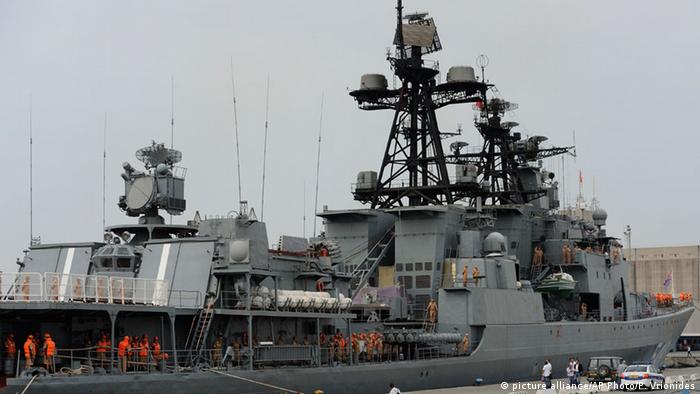The Syrian
military, backed by Hizbollah forces, recaptured the Marj al-Sultan airbase, located about 15
kilometers east of Damascus, on Monday from rebel groups that had been in control of it since
November 2012, reports said. The airbase and the town of Marj al-Sultan,
which some reports said was also recaptured, are in the rebel-held area of
Eastern Ghouta.

“The region would have much to gain from the normalization
of Turkish-Israeli relations,” President Tayyip Erdogan said Monday. Turkey and
Israel have quietly launched talks for the purchase of Israeli gas. Edrogan now
favors the warming of ties with Israel in view of Turkey’s urgent bid for
Israeli gas. Incoming Mossad chief Yossi Cohen was deeply engaged in
negotiations with Ankara for a deal. This sensitive process has
not been revealed to the Israeli public, because local media are dominated
by opposition politicians’ claims that Israel’s offshore gas resources have no
foreign customers. In his comment Monday, Erdogan tried stipulating that
normalization with Israel was contingent on “a compensation deal for the
victims of the Israeli raid on the Turkish Mavi Marmora” and “the lifting of
the Israeli blockade against Palestinians.” However a deal over the
Turkish flotilla raid was settled quietly long ago and Ankara, moreover,
tacitly accepted the blockade on Gaza after a few Israeli token concessions.

Chancellor Angela Merkel
on Sunday brushed off what Germany magazine Der Spiegel said was a request from
US Defense Secretary Ashton Carter for a bigger German military contribution to
the war on the Islamic State. "I believe Germany is fulfilling its part
and we don't need to talk about new issues related to this question at the
moment," Merkel said. A week ago, Merkel gained parliamentary approved for
a German mission to Syria. It includes six Tornado reconnaissance jets, a
frigate to protect the French aircraft carrier Charles de Gaulle, refueling
aircraft and up to 1,200 troops. The chancellor is against German planes
conducting air strikes in Syria besides surveillance missions. A substantial
number of German military advisers are posted n the Iraqi Kurdish regional
capital of Irbil training Kurdish Peshmerga battling the ISIS.

Like other manufacturers
of advanced military weaponry, Russia has found in the Syrian conflict a live
battleground for testing and exhibiting its latest and most advanced tools of
war. The two most sophisticated Russian armaments on full operational display
in recent weeks are the Kalibr NK cruise missile and the Sukhoi Su-34 Fullback
fighter-bomber.
The cruise missiles
launched from a Kilo-class submarine provided visible proof of how President
Vladimir Putin is using his intervention in Syria as a showcase for Russian
military prowess. In terms of flexing
muscle, the Kalibr NK subsonic cruise missile, or as it is known in the West,
the SS-N-30As, takes the prize. Its debut launch from a warship in the Caspian
Sea on Nov. 20, not only hit Islamic State and rebel targets, but allowed
Russian warships to show their paces in delivering long-range missiles, capable
of carrying conventional or nuclear warheads, to targets at a distance of
between 990 km (620 miles) and 1,467 km (923 miles) away.
It also conveyed the
message to NATO that nuclear cruise missiles fired from Russian Black Sea Fleet
warships were capable of reaching any target in Europe.
To counter this message,
American and other Western military sources claimed that the Kalibr missiles
had missed their mark, either crashing in Iran or blowing up prematurely in
mid-air. They hoped to temper the strong impression conveyed to European
governments, which suddenly felt exposed to a nuclear-capable missile threat
from the Black Sea region as well as from Russian fleet bases in the Baltic Sea
port of Kaliningrad, which had just received brand-new Kalibr missile
shipments.
On Dec. 9, the commander
of US forces in Europe, Lt. Gen. Ben Hodges, addressed this situation. He said
that Russia had indeed transferred ballistic missiles to its Kaliningrad
military enclave and conducted nuclear strike drills. He also said: “There is a
significant amount of capability in Kaliningrad, including anti-ship weapons,
air defenses, and electronic warfare equipment.”
Gen. Hodges spoke the day
after the second Russian missile barrage targeted Syria - 17 days after the
first. This time, the Kalibr cruise missiles were launched from a Kilo-class
submarine, the Rostov-on-Don, which had meanwhile sailed into the eastern
Mediterranean. This round too hit their targets, and also conveyed a dual
message:
1. The Russians are
capable of firing advanced cruise missiles from submarines as well as surface
warships, and 2. Russia has established a chain of warships and missiles
running 2.500 km from Kaliningrad in the north to the eastern Mediterranean,
via the Black Sea.
To boost the air power
Moscow is investing in the Syrian war, Russian has brought over half a dozen
Sukhoi Su-34 Fullback warplanes. This fighter-bomber is designed primarily for
striking ground and naval targets. It excels in destroying small moving
targets. Under the conditions in Syria, The Su-34’s rare ability to pinpoint
small ISIS or rebel convoys as well as big ones is especially apposite.
This is a brand new
warplane, which entered the service of the Russia air force only two years
ago. It is being tested in Syria for the first time in real combat conditions.
So far, the SU-34 has stood up to Russian expectations. They are now testing it
further to find out if it can replace the older Su-24 fighter bombers.

In this video Luke Rudkowski talks about the latest news of the Russian war ship that fired warning shots at a Turkish vessel in the Aegean Sea. This video will give you a clear picture at all of the latest developments that have been happening between these two opposing regional powers.
https://www.youtube.com/watch?v=-pe_WpDpVV8

No comments:
Post a Comment